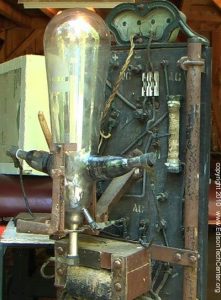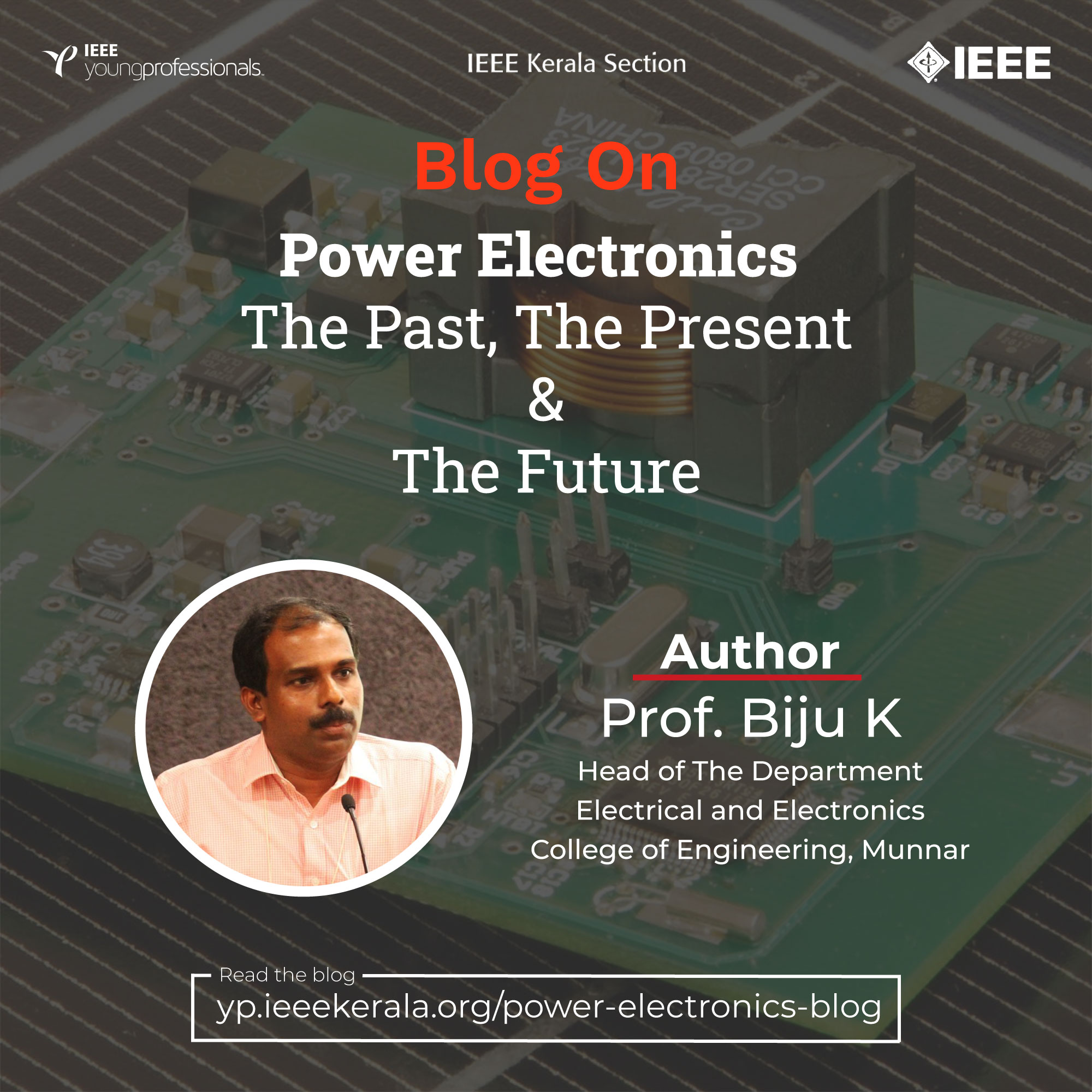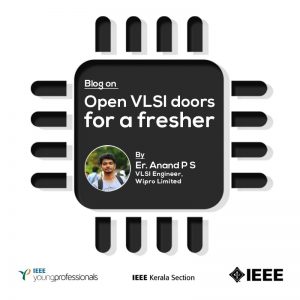This article gives a brief review of the evolution of power electronics over the past 100-plus years and an insight into the current status and the future of power electronic technologies. It includes mercury-arc rectifiers, gas tube electronics, magnetic amplifiers, power semiconductor devices, and converter circuits.
Power electronics deals with the conversion and control of electrical power at high-efficiency. These include DC and AC power supplies, harmonic compensators, high-voltage DC (HVDC) systems, flexible AC transmission systems (FACTS), photovoltaic power conversion, motor drives etc. The technology embraces the areas of power semiconductor devices, converter circuits, electrical drives, digital signal processors (DSPs), field-programmable gate arrays (FPGAs), artificial intelligence (AI) techniques etc.
The history of power electronics goes back more than 100 years. It began in the early 20th century with the invention of mercury-arc rectifier. It caused the beginning of the classical era of power electronics.
Power Electronics in the Classical Era:-
Mercury-Arc Rectifiers:-
The history of power electronics began with the invention of the cathode mercury-arc rectifier by the American inventor Peter Cooper Hewitt in 1902. The rectifiers found immediate applications in battery charging and electrochemical processes. The first dc distribution line with the mercury-arc rectifiers was constructed in New York in 1905. In 1930, the New York City installed a 3,000-kW grid-controlled rectifier for traction dc motor drives. In 1931, Germany introduced mercury-arc cycloconverters that converted three-phase 50 Hz to single-phase 16 2/3 Hz for universal motor traction drives.
Joseph Slepian of Westinghouse invented the ignitron tube in 1933. The ignitron tube was able to handle high power at high voltage. These were popular in railway and steel mill dc drives and synchronous motor drives. Ignitron converters were used in HVDC transmission systems also in the 1950s until thyristor converters replaced them in the 1970s.

Fig.1 Mercury arc rectifier (Photo: Copyright- www.edisontechcenter.org)
Hot-Cathode Gas Tube Rectifiers (Thyratron):-
The thyratron was invented by GE for low-to-medium power applications in1926. It is similar to a grid-controlled mercury-arc tube. Instead of a pool cathode, the thyratron tube used a dry cathode heated by a filament similar to a vacuum triode. The tube was filled with mercury vapor. The thyratrons were very popular for commercial dc motor drives.

Fig.2. Thyratron
Power Electronics in the Modern Era:
Power Semiconductor Devices:
The modern solid-state electronics revolution began with the invention of transistors in 1948 by Bell Laboratories. The modern solid-state power electronics revolution started with the invention of the PNPN transistor (thyristor) in 1956 by Bell Laboratories. GE introduced the thyristor (SCR) to the commercial market in 1958.
The word thyristor comes from the words “thyratron” and “transistor”. Starting with the phase-controlled thyristor, gradually other power devices emerged. The antiparallel thyristor (TRIAC) was invented by GE in 1958 for ac power control. The gate turn-off thyristor (GTO) was invented by GE in 1958. Power MOSFETs and bipolar junction transistors (BJTs) appeared in the market in the late 1970s. Japan introduced high-power GTOs in the 1980s.
Nowadays, the power MOSFETs have become universally popular for low-power high frequency applications. The insulated-gate bipolar transistor (IGBT) was invented in 1983 by GE-CRD under the leadership of Jayant Baliga. Today, IGBT is the most important device for medium-to-high power applications. The high-power, integrated gate-commutated thyristor (IGCT) was introduced by ABB in 1997. Large-bandgap materials, such as SiC, GaN, are showing great promise. SiC devices, such as the Schottky barrier diode (1200 V/50 A), the power MOSFET (1200-V/100), and IGBT (1200 V/100 A) are already there in the market.
Along with the power semiconductor evolution, microelectronics technology was also advancing and the fabrication techniques, packaging, modeling, and simulation techniques contributed to the development of many advanced power devices. Microelectronics-based devices, such as microcomputers/DSPs and FPGA chips, became the backbone of control implementation.
Power Converters:-
The thyristor phase-controlled, line and load-commutated converters, used today, were introduced in the classical era of power electronics. The current source dc link converters became very popular for WFSM drives from the 1980s. The thyristor phase-controlled cycloconverters were very popular from 1960 until multilevel converters made them obsolete in 1995.
The advent of thyristors led to the evolution of the dc-link voltage-fed thyristor inverters. From the 1960s, the era of the thyristor forced commutation techniques started. William McMurray of GE-CRD was the pioneer in this area. He invented techniques, known as the McMurray inverter (1961), the McMurray-Bedford inverter (1961), and so on. Self-commutated devices, such as power MOSFETs, BPTs, GTOs, IGBTs, and IGCTs, began appearing in the 1980s and replaced the majority of thyristor inverters.
The voltage-fed inverters (VFIs) introduced with square wave output had a rich harmonic content. Therefore, the pulse width modulation (PWM) technique was used to control the harmonics as well as the output voltage. Many PWM techniques were proposed subsequently. The front-end diode rectifier was gradually replaced by the PWM rectifier, which allowed for four-quadrant operation and sinusoidal line current at any desired DPF. Current-fed self-commutated GTO converters were introduced in the 1980s.
Matrix converters were introduced by Marco G. B. Venturini in 1980 using inverse-parallel ac switches for ac-ac conversion. Soft-switched dc-ac power conversion for ac motor drives was proposed by Deepakraj Divan of the University of Wisconsin in 1985. The soft-switched, high frequency link, power conversion has been popular for use in dc-dc converters since the early 1980s.
Neutral-point clamped (NPC) multilevel converter was introduced in 1980 that found widespread applications. It is preferred for high-voltage, high-power voltage source converter applications. Gradually, as the number of levels of the converter was increased, many other topologies, such as the cascaded H-bridge and flying capacitor types, were introduced.
DC-DC converters came into practice in the 1950’s. They consist of isolated as well as non-isolated converters. Conventional non-isolated converters include buck converter, boost converter and buck-boost converter. Isolated converters include flyback, forward, push-pull, half bridge, and full bridge converter.
State of the art:-
IGBT and MOSFET are the mostly commonly used power semiconductor devices for switching applications. Wideband gap devices such as SiC and GaN are nowadays catching more attraction. They have advantages compared to conventional semiconductors such as high blocking voltage, high operating frequencies, and operation at high temperature.
The conventional topologies are still mainly in use for DC-DC converters and multilevel converters. Researchers have suggested many improvements in the topologies for isolated and non- isolated DC-DC converters. These mainly focused on improving the efficiency and reducing the ripples. Many hybrid and derived topologies of conventional multilevel inverters are being suggested by researchers, but their commercialization has been very feeble. PWM rectifiers are in place where power factor improvement and bidirectional operation is desired. Matrix converters and active front-end voltage source converters are commonly used for AC-AC conversion applications.
Sinusoidal PWM technique has continued to be the most preferred PWM technique because of its simplicity. In addition to the classical PWM techniques such as sinusoidal PWM, selective harmonic elimination PWM, space vector PWM etc., many advanced PWM techniques are also being suggested.
Power electronics technology is nowadays used in almost all energy conversion applications. These include motor drives, electric vehicles, traction systems, marine systems, renewable energy systems, distributed generation, HVDC systems, grid interconnection etc. Various kinds of charging methods are used for electric vehicles. It includes level-1, level-2, and level-3 chargers. Level 1 and 2 are ac chargers while level 3 is dc charging. Wireless charging technologies are also coming up, but the power that can be transferred is very limited.
Power Electronics in the Future:-
Wide bandgap devices such as SiC and GaN are gaining momentum and are going to replace the conventional semiconductor devices. Many new converter topologies are being suggested by the researchers, and are expected to be in practice in certain applications in the near future. Researchers have suggested many advanced PWM techniques and they may find a few applications. Power electronics is going to be widely used in various power system applications. HVDC transmission using an integrated power electronic module (IPEM) is catching attraction. Modular multilevel converters are replacing conventional voltage source inverters in HVDC applications. Wireless charging technologies may replace conventional chargers in electric vehicles.
The enormous potential in the development of power electronics to be driven by emerging technologies such as the intergrid or future electronic energy network, offshore wind power, multilevel cascade converters for interconnection, high-voltage dc transmission, solid-state transformers in traction and smart grids, dc grids and new medium-voltage grid technology, large battery storage, and new control technologies. Considering these technological advancements, it is certain that power electronics is going to have a bright future ahead.
Bibliography:-
1. E. L. Owen, ‘Power Electronics and Rotating Machines – Past, Present and Future’, IEEE Power Electronics Specialists Conference, 1984.
2. Bimal K Bose, ‘Power Electronics-An Emerging Technology’, IEEE Transactions on Industrial Electronics, Vol. 36, No. 3, August 1989.
3. Thomas G. Wilson, ‘The Evolution of Power Electronics’, IEEE Transactions on Power Electronics, Vol. 15, No. 3, May 2000.
4. Vassilios G. Agelidis, ‘The Future of Power Electronics/Power Engineering Education: Challenges and Opportunities’, IEEE Workshop Power Electronics Education, 2005.
5. Jacobus Daniel van Wyk, Life Fellow, IEEE, and Fred C. Lee, Fellow, IEEE, ‘On a Future for Power Electronics’, IEEE Journal of Emerging and Selected Topics in Power Electronics, Vol. 1, No. 2, June 2013.
Author biography:-
Prof. Biju K is currently working as the Head of the Department of Electrical& Electronics Engineering in College of Engineering Munnar. He has got more than 18 years of teaching experience. He took B.Tech from Rajiv Gandhi Institute of Technology Kottayam, and M.Tech in Power Electronics from National Institute of Technology, Calicut. He is currently Pursuing Ph.D. from National Institute of Technology, Calicut.
He has delivered various technical talks in different engineering colleges across Kerala. He has guided a number of projects for B. Tech & M. Tech students. He has published a number of papers in various international journals and conferences. His research interests include power electronics and control systems.
Biju K is a senior member of IEEE and currently serves as the Vice-chair of IEEE IA/IE/PELS Jt. Chapter Kerala.
Email: bijuk@ieee.org




